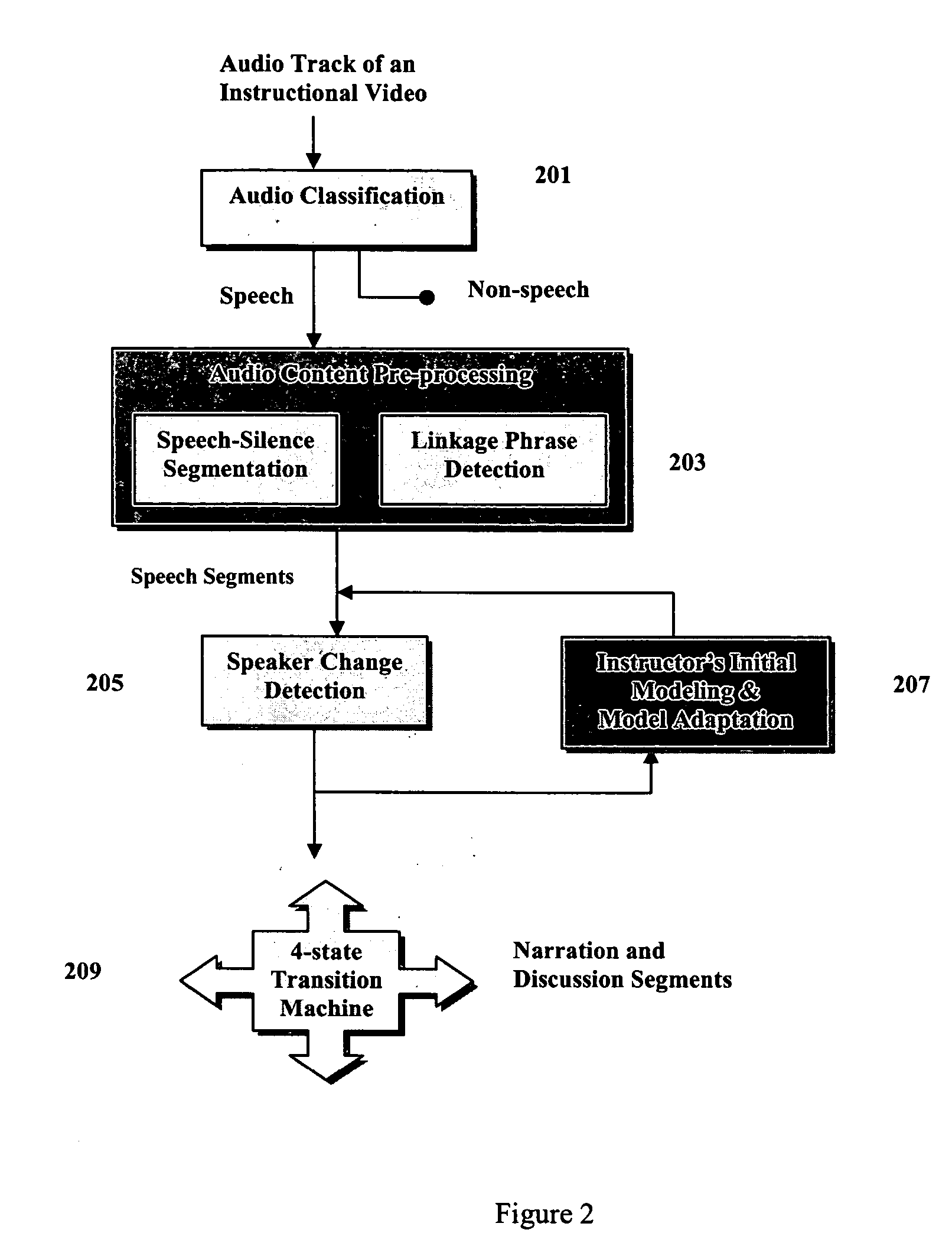Framework for extracting multiple-resolution semantics in composite media content analysis
- Summary
- Abstract
- Description
- Claims
- Application Information
AI Technical Summary
Problems solved by technology
Method used
Image
Examples
Embodiment Construction
Overview of the Framework for Learning Media Content Analysis
[0020]FIG. 1 illustrates a hierarchical framework view for extracting semantics from e-learning media content of the present invention. A hierarchical framework may be defined as a conceptual diagram of a computational process or a flow from beginning to end which can be described using a tree-like structure with branches and nodes, where branches represent possible flow paths and the nodes represent different destinations. A hierarchical framework may be implemented as a series of steps, where at each step there is a decision-making process that determines the next possible step among available choices based on certain criteria. Typically, it can be described as a method of flowchart.
[0021] The term “semantics” may be defined as meanings or associated knowledge that is inferred by humans watching the media. For example, in a lecture video, appropriate semantics such as “teacher teaching or lecturing” can be assigned to...
PUM
 Login to View More
Login to View More Abstract
Description
Claims
Application Information
 Login to View More
Login to View More - R&D
- Intellectual Property
- Life Sciences
- Materials
- Tech Scout
- Unparalleled Data Quality
- Higher Quality Content
- 60% Fewer Hallucinations
Browse by: Latest US Patents, China's latest patents, Technical Efficacy Thesaurus, Application Domain, Technology Topic, Popular Technical Reports.
© 2025 PatSnap. All rights reserved.Legal|Privacy policy|Modern Slavery Act Transparency Statement|Sitemap|About US| Contact US: help@patsnap.com



